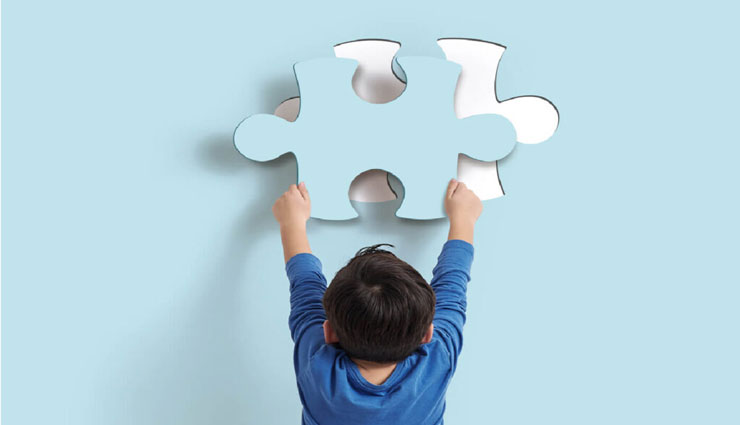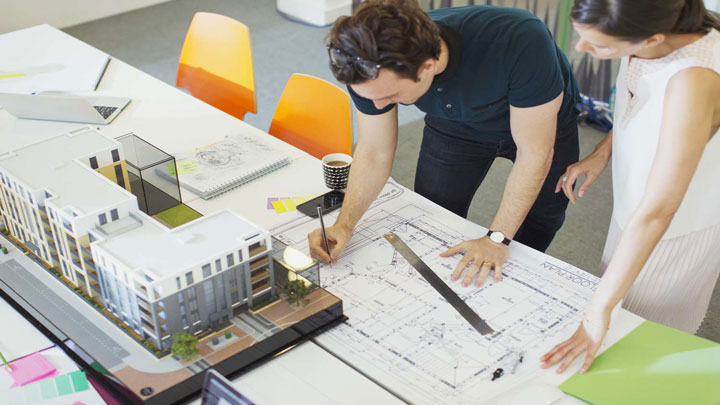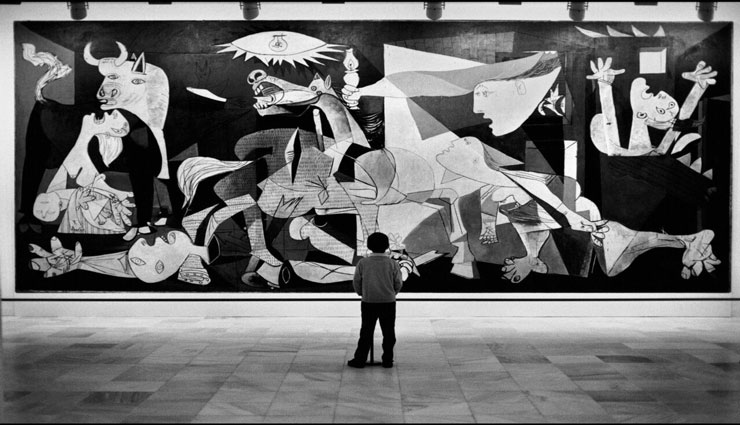Spatial intelligence is one of the known types of human intelligence that allows us to recognize dimensions and proportions. We are born in an environment full of different objects and cannot interact with the environment without understanding dimensions and proportions. Therefore, strengthening spatial intelligence is necessary for better interaction with the environment. Also, success in many jobs is not possible without this intelligence. In this article, we define spatial intelligence, give examples of its applications, and then introduce methods to enhance it and some related jobs.
What is spatial intelligence?
Spatial intelligence is one of Howard Gardner’s nine intelligences. His artificial intelligence theory divides human intelligence into nine categories, one of which is spatial intelligence. This intelligence expresses the ability to visualize and imagine objects and their place in the environment and manipulate them. A person with a lot of spatial intelligence can identify objects in the environment well and remember their distance and size. He can rotate or manipulate these objects in his mind.
Examples of the application of spatial intelligence
We use our spatial intelligence to do many everyday tasks, such as:
- When we pack a suitcase, we imagine the dimensions of each item and try to fit as many items in the suitcase as possible.
- While driving and parking, we regularly use our spatial intelligence to understand distances and sizes. The whole process of driving depends on our spatial intelligence.
- By reading the 2D instructions written in the manual, we assemble the devices in 3D.
When studying, we use spatial intelligence to understand geography and mathematics. According to research, the stronger this dimension of our intelligence, the better we know mathematics, especially geometry.
Types of Spatial Intelligence
Spatial intelligence can be divided into two categories. Although this division has no exact boundary, it helps us better understand a person’s ability in a particular area.
- Spatial visualizers: This group of people can visualize objects and their dimensions very well, but their understanding does not include the details of objects. In other words, they imagine space and relationships between objects without attention to their details.
- Visualizers of objects: this group of people can remember the details of an object very well and accurately and imagine it in their minds.
Spatial intelligence of any kind can be learned. Although some children are more talented in this field from the beginning, others can improve their spatial intelligence differently.
How do we strengthen children’s spatial intelligence?

In their research, scientists found that even at four months old, children can understand the surrounding space and the rotation of objects. By examining the brain, neuroscientists found that certain parts directly relate to spatial intelligence. Therefore, the exercises and training necessary to strengthen children’s spatial intelligence can be started from an early age. In the following, we have introduced some valuable methods and exercises to enhance this intelligence.
1. Use words that enhance spatial intelligence
Parents can use words like big, short, tiny, triangular, and curved when describing objects. Young children understand these concepts better when a name is chosen for them. According to research, children who have learned different things with these descriptions at home and before school get better results in spatial intelligence tests.
2. Use shadow play and non-verbal cues
Playing with shadows and using non-verbal cues is an easy and effective way to strengthen children’s spatial intelligence. For example, if we can teach numbers to children with the help of hands, their spatial intelligence will grow.
3. Encourage children to imagine
The ability to imagine is an essential element to enhance spatial intelligence. When you read a storybook to a child, ask him to imagine and even draw pictures of people, objects, and situations in his mind. Let her imagination run free to add things to her drawing.
4. Use toys and computer games that enhance spatial intelligence
Some toys, such as 3D houses and Legos, directly engage the child’s spatial intelligence. The child should imagine different situations and make other objects with these tools. For more effectiveness of these devices, combine them with the story. According to research, the combination of these games with the story leads to the strengthening of spatial intelligence.
Along with puzzles and fundamental tools, computer or mobile games like Tetris also play a role in strengthening children’s spatial intelligence.
5. Encourage children to read maps
Map reading is an effective way to strengthen spatial intelligence. During trips, ask children to check the route and imagine it in their minds. Children and teenagers improve their imagination and spatial intelligence by examining the map and trying to understand its scale and signs.
6. Provide children with picture books
Reading comic books plays a role in strengthening this intelligence. These books mostly tell the story with pictures. Therefore, children are led to imagine events and move roles in their minds.
7. Give the camera to the children to take pictures
Photography is a skill. If children have the opportunity to take different pictures, they can use their spatial intelligence when adjusting the camera angle. As a teenager, participating in photography workshops is a way to strengthen spatial intelligence as much as possible.
8. Let the children make cardboard crafts
Making crafts is an old but valuable way to improve spatial intelligence. When a child wants to make a craft, he must use his spatial intelligence and visualization power. He should know the sizes and how to fold and shape the papers. His effort to make a craft strengthens this intelligence. If necessary, you can guide him in this process.
9. Don’t forget music lessons
Learning music and playing an instrument may also strengthen spatial intelligence because a child or teenager must imagine and perform the notes simultaneously with his hands or lips. Note that listening to music has little effect on this intelligence.
Is spatial intelligence different in boys and girls?
One of the typical old stereotypes is that boys have better spatial intelligence than girls. In America, women usually score lower than men on spatial intelligence tests. However, in recent years, many studies have discredited this stereotype and have shown that the lower score of girls in these tests was the result of gender stereotypes, not their lower intelligence.
In research in Italy, 152 high schools were divided into three groups. The first category was schools that taught in the old way and with a gender perspective; The second group was those who led boys to believe in the superiority of girls’ spatial intelligence. The third group also led the equality of this intelligence in both sexes. The spatial intelligence tests of these three groups showed that the girls in the second group performed the same as the boys in the intelligence tests. In the third category, the scores of boys and girls were close to each other.
The results of this research, like many other research studies, prove that the way we teach and look at the abilities of people based on their gender plays a fundamental role in the formation of the skills of boys and girls.
In what jobs is the role of spatial intelligence more prominent?

Some jobs are closely related to spatial intelligence, and without acquiring skills related to spatial intelligence, such as understanding dimensions and proportions, you cannot work or be successful in these jobs. In the following, we introduce some jobs suitable for spatial intelligence.
1. Photography
Photography is a way to strengthen spatial intelligence, so photography as a job also requires such intelligence. Photography in any field requires a lot of spatial understanding.
2. cooking
Cooks, especially restaurant cooks, also need spatial intelligence. The kitchen environment is a busy place, so the cook must have a proper understanding of its space. On the other hand, food decoration and the ratio of each ingredient are other important cooking topics that the cook must understand adequately.
3. Visual Arts
Visual arts such as painting, sculpture, and carving are impossible without spatial intelligence. People who want to work in these fields must have solid spatial intelligence.
4. Graphic Design
Graphic designers also need spatial intelligence when designing posters and advertising cards, creating animations, or any other task related to their job. Graphic designers especially need to understand proportions well.
5. architecture
Architects also depend on their spatial intelligence during their studies and at work. For example, an architect should be able to make a replica of the building he designed or imagine the place he created in his mind when working with design software.
6. Decoration design and industrial design
Interior designers hired to arrange the house and design the rooms must understand the space, the size of the objects, and their combination with the environment. Industrial designers also depend on spatial intelligence to create various devices and tools.
7. Civil engineering and drawing
Civil engineers and mapping technicians also use their spatial intelligence to design and build cities and neighborhoods. They should be able to look at an engineering map or a vacant lot and visualize the layout of streets and buildings in their mind.
8. Air traffic control
Those who work in the air traffic control tower have to look at the screen and understand the numbers for each aircraft in their head. The two-dimensional radar screen is full of numbers and signs of different aircraft, and the controller must be able to visualize the sky’s overall picture and each ‘s position.
9. surgery
Surgeons also use spatial intelligence to understand the dimensions of each organ and tumor. For example, a heart or brain surgeon must be familiar with the dimensions of the heart or brain and their problems. For example, when determining the surgical method, the brain surgeon must have a complete understanding of the size of the tumor and its placement in the brain to choose the best method to remove it.
you say
What other jobs do you know where spatial intelligence plays an important role? Please share them with us in the comments section.
Warning! This article is only for educational purposes; to use it, it is necessary to consult a doctor or specialist.



